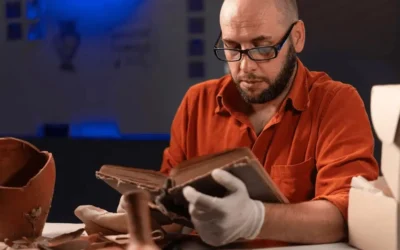Surveying Organizational Records
Margot Note
Records are essential to every organization. Records can be in any form, including physical documents and electronic files.
Proper management and organization of records is crucial for any organization to function smoothly. Records provide evidence of the organization’s activities and help staff make informed decisions.
One of the most effective ways to manage records is through inventorying them. An inventory of records is a systematic process of identifying, organizing, and describing records to ensure proper management. The inventory process involves several steps, including surveying, analyzing, and classifying records. The first step in the inventory process is the record survey worksheet.
A record survey worksheet is a document that helps organizations collect essential information about their records. The worksheet provides a standardized format for recording information about records, such as their location, format, creator, and access restrictions. In addition, the worksheet acts as a guide for the surveyor to collect all the necessary information consistently and efficiently.
Overview of Records
The purpose of a record survey is to provide a comprehensive overview of the records held by the organization. The survey helps identify duplicates, records no longer required, and records that must be preserved for legal, business, or historical reasons. In addition, the information collected in the survey helps create an inventory to help manage the records effectively.
Several Sections to Document
The record survey worksheet includes several sections that capture critical information about records. The first section captures information about the record’s title or description. In addition, this section contains information about the record’s creator, date of creation, and purpose. This information helps in identifying the records and their context.
The second portion notes the record’s format. This section includes information about the physical format of the record, such as paper, microfilm, or digital. The area also captures information about the size of the record, the number of pages, and any other relevant information about the format.
Another area denotes the record’s location. This section includes information about the record’s location, such as a file cabinet or a server. This information helps in locating the record when it is required.
A section records access restrictions. This section includes information about who can access the record and any restrictions on access, such as confidentiality or legal requirements.
The final section captures information about the record’s retention and disposition. This section includes information about how long the record needs to be kept and how it should be disposed of when it is no longer required. In addition, this area highlights materials that need to be sent to the archives because of their enduring value.
A Critical Tool
Record surveys are critical for managing records effectively. They provide a standardized format for collecting essential information about records—ensuring consistency and accuracy in the inventory process. In addition, record surveys help organizations identify duplicate and obsolete records, comply with legal and regulatory requirements, and save storage and maintenance costs. Proper records management is essential for any organization’s success, and a record survey worksheet is essential in achieving this goal.
Record surveys can be a helpful tool for archives programs regarding preservation. By capturing information about the records, such as their physical format, condition, and preservation needs, the worksheet can help the archives program identify records requiring special attention or treatment. For example, records in poor physical condition, such as those that are fragile, damaged, or at risk of deterioration, can be identified and prioritized for conservation or restoration. The survey can also help the program track records’ preservation status over time, ensuring they receive the necessary care and attention to ensure long-term survival. Ultimately, by helping to identify and prioritize records that require preservation, the record survey worksheet can help archives programs ensure that valuable records are preserved for future generations.
Margot Note
Margot Note, archivist, consultant, and Lucidea Press author is a regular blogger, and popular webinar presenter for Lucidea, provider of ArchivEra, archival collections management software for today’s challenges and tomorrow’s opportunities. Read more of Margot’s posts here.
Never miss another post. Subscribe today!
Similar Posts
Texas Archive of the Moving Image: Interview with the Digital Archivist
I recently interviewed Grace Muñoz about her work at the Texas Archive of the Moving Image. Her work on improving the discoverability of the multimedia collection is fascinating.
How to Conduct Comprehensive Archival Surveys
Conducting a comprehensive archival survey is critical to successfully managing archival collections.
Remembering History, Moving Forward Together, with ArchivEra
The Catholic Diocese of Arlington’s Director of Archives selected ArchivEra to manage their collections of historical and cultural significance, and strike a balance between security and access.
Unveiling Archival Impact
The transformative power of storytelling depends upon the strategic choices that top archival performers make and the shift from being record-keepers to change agents.




Leave a Comment
Comments are reviewed and must adhere to our comments policy.
0 Comments